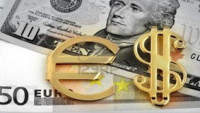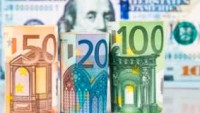 The rebound in European stocks that began on Friday continued yesterday with the DAX pushing back above the 10,000 level for the first time since 13th January, helped by further gains in the banking sector, as equity markets look to disentangle themselves from their recent symbiotic relationship with the oil price.
The rebound in European stocks that began on Friday continued yesterday with the DAX pushing back above the 10,000 level for the first time since 13th January, helped by further gains in the banking sector, as equity markets look to disentangle themselves from their recent symbiotic relationship with the oil price.
Over the last few days the oil price has appeared to struggle to gain a foothold above the $40 a barrel level, largely due to the reluctance of Iran to join other oil producers in capping their production levels. Their insistence that they would only do so once they had returned to pre sanctions levels, a stance endorsed by Russia, saw prices drop sharply yesterday.
Banking stocks enjoyed another decent day with Italian bank Monte dei Paschi closing up 10% on reports that Italian PM Matteo Renzi had asked if Intesa Sanpaolo bank and state lender Cassa Depositi e Prestiti might consider acquiring the troubled lender, which has already been bailed out three times in the last few years. Given how previous attempts to bailout failing banks have ended.
If that doesn’t sound like a poison pill then I don’t know what isn’t given the recent experience of Bankia in Spain and Lloyds Banking Group here in the UK, in looking to bail out troubled counterparts.
Given the lack of transparency surrounding the banks toxic assets this sounds like another case of wishful thinking, and a recipe for disaster.
Despite all of this the main focus this week remains on central bank rate meetings. At its last meeting the Bank of Japan caught the market unawares by unexpectedly cutting rates into negative territory, after previously suggesting that such a move was not on the table.
As we subsequently found out the move by Mr Kuroda backfired horribly as the yen shot higher and stock markets dropped sharply on concerns about future bank profitability, as well as concern that the unexpected move by the Japanese central bank was motivated by a concern of a much deeper concern about the Japanese economy.
Today’s meeting saw the BoJ leave policy unchanged as the bank looks to evaluate the effect the recent decision to implement negative rates has had on the economy as well as business and financial institutions, where confidence has taken a bit of a knock. The bank said it remained prepared to act further if circumstances required.
Moving on to today’s events the latest two day FOMC meeting gets underway in Washington this afternoon with US policymakers looking to get an overview of how the US economy is doing right now in the context of the recent market volatility and latest economic data.
It’s no secret the manufacturing sector is under pressure, not only in the US but globally as well so today’s March Empire manufacturing survey isn’t expected to offer up too much optimism apart from a slightly improvement on February’s -16.6, to -10.3, making it the eighth consecutive monthly contraction.
The retail sales data for February look set to be the most important data point today, with expectations of a decline of -0.1%, after three successive months of modest gains.
Over the past 12 months US consumers have proved to be fairly reticent when it comes to opening their wallets, suggesting that the US economy may not be as strong as policymakers believe that it is, despite the sharp falls in oil and gasoline prices. A weak reading here is likely to reinforce the prospect that we will more than likely get no move from the Fed tomorrow evening with attention set to be more on the narrative and guidance from the US central bank than the actual decision itself.
Particular attention should be paid to the Fed’s inflation and growth forecasts, in the context of when to expect the next rate rise, as well any concerns policymakers may have about the weak global outlook.
EURUSD – after the rally to just above the 1.1200 level last week we’ve started to slip back towards the 200 day MA at 1.1050. This needs to hold for a move towards 1.1380 and the February highs to unfold. Only below 1.1030 argues for a move towards 1.0800, with a break targeting 1.0600.
GBPUSD – the pound has continued to slip back after last week’s rebound to 1.4440, which means that in the short term we could well see a pullback towards the 1.4220 area. While we stay above this key level and last week’s low at 1.4120 we could well see further gains towards the 1.4600 area.
EURGBP – last week’s low looks like a potential neckline support between 0.7670 and 0.7690. With resistance currently at 0.7860, a failure to break higher could trigger a fall towards that support and potentially a move to 0.7520. A move above 0.7860, could well revisit the 0.7930 area.
USDJPY – still side-lined between support at 111.00 and resistance at 114.90 we need to see a break one way or the other for clues as to the next move. The bias remains towards the downside towards 106.00 while resistance at 114.80 remains intact. Above 115.00 argues a short term base is in place.
Source: CMCmarkets












